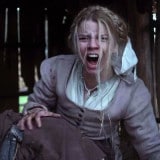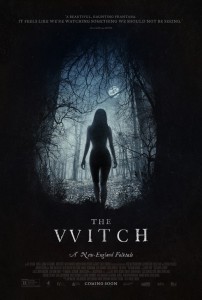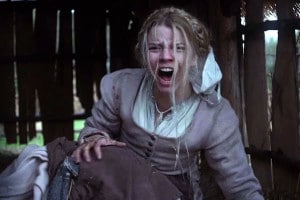
Movie Review: The Witch
What We Liked
What We Didn't Like
Even before any form of narrative kicks in, The Witch wastes no time establishing a mood that’s toxic for the faint of heart. Unsettling close-ups, a banishment of undetermined nature, and a disgraced Puritan family make for the forest under the frightening stillness of a looming long shot. Matters are made worse by the wailing choruses that undercut each of the film’s opening images, drizzling dread over the viewer as if in preparation for a ritualistic embalming. “We will conquer this wilderness!” says patriarch William 
Things manifest pretty quickly. The script does away with any preconceived notions of when a scary movie is “supposed” to become truly scary, instead opting for infant atrocities nearly ten minutes into a ninety-minute runtime. As a result, paranoia typically introduced into a final act is outstretched to fit a household rapidly descending into hostility. Glimpses of the Witch arrive only when obscured by the black of night, but the daunting rays of daytime are reserved for equally heinous activities. Whether that of eldest son Caleb (Harvey Scrimshaw) and his pubescent feelings towards sister Thomasin (Anya Taylor-Joy), or the Paganized playtime of their younger twin siblings (Ellie Grainger and Lucas Dawson), the film dares to venture into thematic territory as vacantly ominous as its environment.
This idea of Godlessness, or lack of faith, is where the true horror of The Witch manifests. Well placed moments of visceral stomach churning, be it from a bucket blood spurt or an unofficial exorcism of sorts, come backed by a context that only enhances the psychological damage inflicted. Caleb’s wood cabin seduction and subsequent bewitching arrives as knee-jerk reactions to his hormonal flaws, while mother Katherine’s lack of religious acumen comes back to bite her. Or peck her, more tellingly. That the family eventually devolves into it’s own little Salem witch trial (decades before the real thing) is where cinematic heights are truly scaled – tapping into hysteria previously known only to masterpieces like The Exorcist (1973) and The Omen (1976).

As for Eggers’ inexplicable talent in heading up his first film, one may have to look towards potential pacts with the Devil himself – nothing else really makes sense. The rookie writer/director expresses his story with the assurance of a proven legend; each shot an opportunity provided and fulfilled with unpredictable glee. A debut this fully formed doesn’t appear often, but, to be fair, neither does a film this horrifyingly artful. As a result, The Witch’s sticky residue of realism will outlast any flashy artificial flavors in its wake. People will be talking about this movie for a long time.



Latest posts by Danilo Castro (see all)
- The 20 Best Detective Movies of All Time - February 16, 2016
- Life & Death: Ranking the Films of Alejandro González Iñárritu - January 6, 2016
- Evolution of a Champ: The Rocky Film Saga - November 25, 2015


